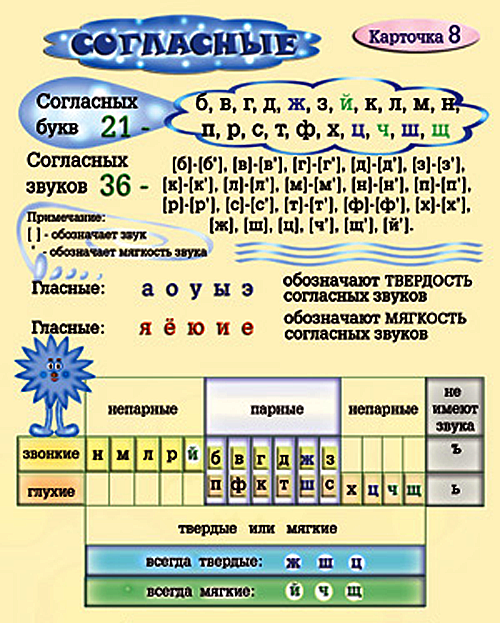Instruction
1
Hard and soft consonants articulation formed differently. Watch: pronouncing a soft consonant, you have all the body language pushing forward, raising his average back to the hard palate. Uttering the same hard consonants, you move body language ago.Speakers of languages in which the hardness/softness of consonants is not similarsocial sign, face with difficulties, mastering the Russian language. Including the aforementioned – articulation. Remember the famous joke: "Small is the big flies, as they say – it flies in the closet!".
2
In the letter, the softness of consonants is determined by their position in the word and the environment.In the middle of words the consonants are softened in the position facing the so-called gotovymi vowels or diphthongs. It's the letters that represent two sounds: e (yeah), yo (yo), Yu (Yu), I (ya). In this case gotovye e, e, u, I transfer only the sound of <e>, <o>, <u>, <and>, respectively. For example: gray, grater, likes pull. As in such words as: sir, congestion, splint, Tanya. And use instead the letters e, o, u, gotowych just intended to point out the need of softening the previous consonant.Hardness/softness of the consonant is also influenced by the choice of vowels and/s. Before a consonant letter And definitely softened (writes), before S consonant pronounced strongly (bursting).
3
Position at the end of the hardness/softness of a consonant is also strong. The softness of the end consonant is transferred to the letter using the letter S. Compare: Kon – Kon, mol – mol.The letter "S" is used to indicate the softness of the preceding consonant before the next and in the middle of a word. Example: skate – com, hemp, foam.
Note
Varies even position soft consonants, which the letter does not indicated (the bridge song). This, of course, creates certain difficulties in mastering the Russian written language.
Useful advice
It should be remembered that in the Russian language there are also unpaired only soft consonants. For the correct spelling of words with letters h, u, there are special rules graphic. ("cha schA write the letter a", "CHK, CHN, LF, nsch – write without the soft sign).



